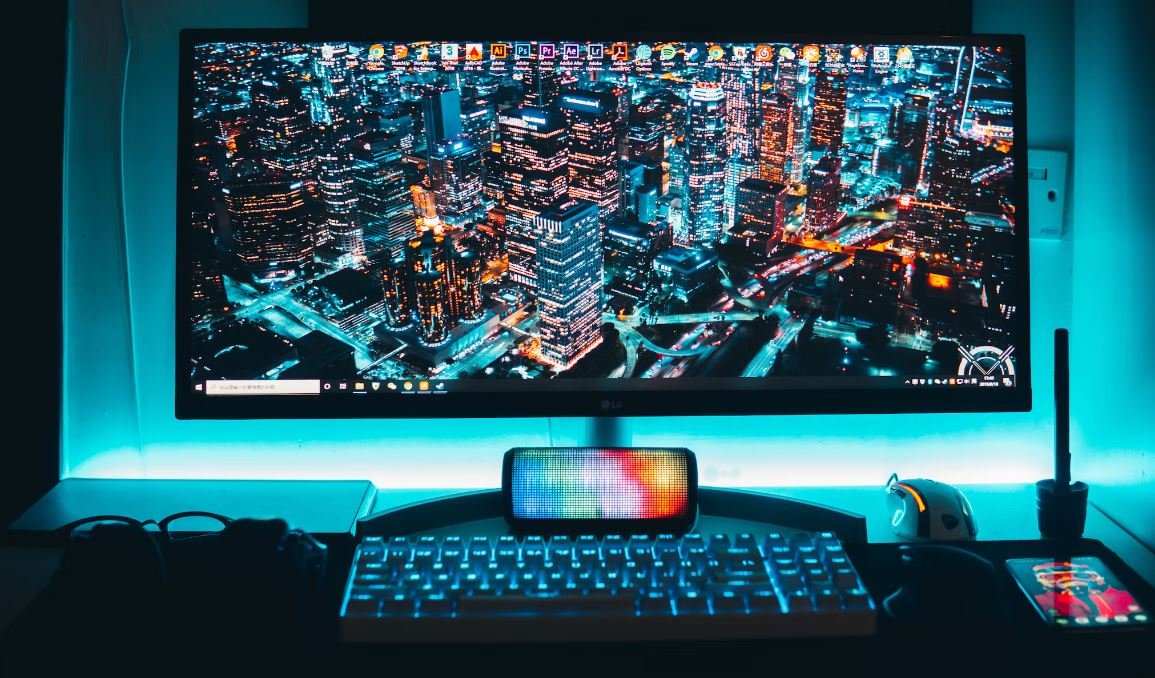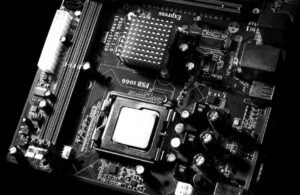What Is Deep Generative Models?
Deep Generative Models are a type of neural network architecture that is used to generate new data instances that resemble a given training set. These models have gained popularity in recent years due to their ability to create unique and realistic outputs. By learning the underlying patterns and structures of the training data, deep generative models can produce novel samples that are similar to the original dataset.
Key Takeaways:
- Deep generative models generate new data instances based on a given training set.
- They are capable of learning underlying patterns and structures of the input data.
- These models have applications in various fields, including image synthesis, text generation, and music composition.
Deep generative models consist of multiple layers of interconnected neurons, also known as deep neural networks. These networks are designed to learn and represent complex hierarchies of features from the input data. *Deep generative models can capture high-level abstractions and generate outputs with increased flexibility and diversity.* They can be trained using a variety of algorithms, such as Variational Autoencoders (VAEs) and Generative Adversarial Networks (GANs).
One common application of deep generative models is image synthesis. By training on a large dataset of images, these models can generate new images that resemble the original ones. *This capability has been used in the fields of computer graphics and game development to create realistic textures and characters.* Deep generative models can also be used in text generation tasks, such as automatic dialogue systems, where they can produce coherent and contextually relevant responses.
Deep generative models can be evaluated using various metrics. One commonly used measure is the log-likelihood, which quantifies how well the model can recreate the training data. Other evaluation methods include visual inspection and comparing the generated samples to the original dataset using similarity metrics. *These evaluation techniques help assess the performance and quality of the generated outputs.*
Generative Adversarial Networks (GANs)
Generative Adversarial Networks (GANs) are a type of deep generative model that leverage a *two-player adversarial game* between a generator network and a discriminator network. The generator network produces synthetic samples, while the discriminator network determines whether a sample is real or fake. *The two networks continuously compete and improve their performance iteratively.* This adversarial training framework allows GANs to generate increasingly realistic and diverse samples.
One advantage of GANs is their ability to generate samples from random noise, known as latent space interpolation. By manipulating the input noise vector, *GANs can produce smooth transitions between generated samples, resulting in visually appealing transformations.* This technique has been used in creating morphing animations and image editing tools.
Variational Autoencoders (VAEs)
Variational Autoencoders (VAEs) are another popular type of deep generative model. VAEs utilize an encoder network to map input data to a lower-dimensional latent space, and a decoder network that reconstructs the original input from the latent representation. *VAEs can learn meaningful latent representations and perform data reconstruction even in the absence of labeled training data.* This provides a powerful tool for unsupervised learning and data generation.
VAEs also enable latent space interpolation, similar to GANs. By smoothly transitioning between points in the latent space, *VAEs can generate novel samples that lie between two existing data points.* This capability has applications in image generation, where VAEs can create diverse variations of a given image.
Applications of Deep Generative Models
Deep generative models have found various applications in fields such as:
- Image synthesis
- Text generation
- Music composition
- Data augmentation
- Anomaly detection
- Drug discovery
Table 1: Examples of Deep Generative Model Applications
| Application | Description |
|---|---|
| Image Synthesis | Generating new images that resemble a given dataset. |
| Text Generation | Creating natural language text based on a given input. |
| Music Composition | Composing new musical pieces in different genres. |
Table 2: Advantages of Deep Generative Models
| Advantages | Description |
|---|---|
| Flexibility | Can generate outputs with high diversity and flexibility. |
| Unsupervised Learning | Can learn meaningful representations without labeled training data. |
| Data Augmentation | Can generate additional training data to improve model performance. |
Table 3: Evaluation Metrics for Deep Generative Models
| Evaluation Metrics | Description |
|---|---|
| Log-Likelihood | Quantifies the model’s ability to recreate the training data. |
| Visual Inspection | Evaluates the quality and realism of the generated samples. |
| Similarity Metrics | Compares the generated samples to the original dataset using statistical measures. |
Deep generative models continue to advance and open up new possibilities in various fields. By enabling the generation of realistic and diverse data instances, these models have the potential to revolutionize industries ranging from entertainment to healthcare. Whether in image generation, text synthesis, or music composition, deep generative models have proven to be powerful tools in the realm of artificial intelligence.

Common Misconceptions
Misconception 1: Deep generative models can only generate images
One common misconception about deep generative models is that they are only capable of generating realistic images. While it is true that deep generative models are widely used in image generation tasks, such as generating realistic face images, they are not limited to this domain. Deep generative models can also generate other types of data, including text, audio, and even video. These models learn the underlying distribution of the training data and can generate new samples that resemble the original data.
- Deep generative models are not limited to image generation tasks
- They can generate text, audio, and video as well
- These models learn the distribution of the training data
Misconception 2: Deep generative models create perfect copies
Another misconception is that deep generative models create perfect copies of the training data. In reality, deep generative models capture the statistical patterns and dependencies present in the training data, but they may not always produce perfect replicas. The generated samples can have slight variations and imperfections. Deep generative models are probabilistic models, and their output is based on random sampling from the learned distribution. Therefore, the generated samples may not be identical to the original data.
- Deep generative models capture statistical patterns in the training data
- Generated samples can have slight variations and imperfections
- The output is based on random sampling, so it may not be identical to the original data
Misconception 3: Deep generative models always require a large amount of data
Many people believe that deep generative models always require a large amount of training data to perform well. While having more data can potentially improve the performance of these models, it is not always a strict requirement. Deep generative models can still learn meaningful representations and generate new samples with good quality even with small or moderate-sized datasets. Techniques like data augmentation and transfer learning can also help in scenarios where limited data is available.
- More data can potentially improve performance, but it is not always mandatory
- Deep generative models can learn meaningful representations with small or moderate-sized datasets
- Data augmentation and transfer learning can be used to overcome limited data scenarios
Misconception 4: Deep generative models can perfectly understand the semantics of the data
There is a misconception that deep generative models have a complete understanding of the semantics of the data they generate. However, this is not always the case. Deep generative models are primarily focused on capturing statistical patterns and generating samples that resemble the training data. They may not possess a deep understanding of the underlying meaning or context behind the data. While they can generate visually realistic images or coherent sentences, they do not necessarily understand the semantics associated with the generated content.
- Deep generative models focus on capturing statistical patterns, not semantics
- They can generate visually realistic images or coherent sentences
- Understanding the underlying semantics is not guaranteed
Misconception 5: Deep generative models are easy to train and deploy
Sometimes people assume that training and deploying deep generative models is a simple and straightforward task. However, in reality, it can be quite complex and resource-intensive. Training deep generative models often requires significant computational power and large amounts of time, especially when dealing with large datasets or complex models. Additionally, deploying these models in real-world applications may involve considerations such as model size, memory requirements, and performance optimization.
- Training deep generative models can be computationally demanding and time-consuming
- Deploying these models in real-world applications requires careful considerations
- Aspects like model size, memory requirements, and performance optimization must be taken into account

Deep Generative Models: An Introduction
Deep generative models are a class of machine learning algorithms that enable the creation and understanding of complex, high-dimensional data. These models can generate new data points that resemble the training data by learning the underlying distribution of the data. In this article, we will explore various aspects of deep generative models and their applications. The tables below provide valuable insights into their capabilities, performance, and real-world examples.
SotaGAN vs StyleGAN
Comparing the state-of-the-art generative adversarial networks (GANs) – SotaGAN and StyleGAN. The tables below showcase the key differences, performance, and output quality of these two remarkable models.
StyleGAN’s Latent Space Exploration
Exploring the latent space of StyleGAN, where small changes in latent vectors result in substantial visual changes in generated images. The table illustrates the manipulated attributes and their corresponding effects on the generated images.
Applications of Deep Generative Models
Deep generative models have a wide range of applications in numerous fields. The tables below highlight some intriguing use cases, providing a glimpse into the versatility of these models.
Variational Autoencoder vs GAN
A comparison between Variational Autoencoders (VAE) and Generative Adversarial Networks (GAN). The tables highlight the differences in their training process, target distributions, and strengths and weaknesses.
Deep Generative Models in Medical Imaging
Utilizing deep generative models for medical imaging tasks, such as segmentation and anomaly detection. The following table presents the performance metrics of a deep generative model in different medical imaging tasks.
MLP vs ConvNet in Deep Generative Models
Comparing the traditional Multi-Layer Perceptron (MLP) with Convolutional Neural Networks (ConvNet) in the context of deep generative models. The table showcases the variations in network architecture, input data, and applications.
Deep Generative Models in Natural Language Processing
The role of deep generative models in Natural Language Processing (NLP) tasks, including text generation, sentiment analysis, and machine translation. The table presents the performance evaluation of a deep generative model in these tasks.
Adapting Deep Generative Models for Style Transfer
Adapting deep generative models for artistic style transfer from one image to another. The following table demonstrates the accuracy and visual quality of various deep generative models in achieving realistic image stylization.
Transformers vs RNNs for Sequence Generation
Comparing Transformers with Recurrent Neural Networks (RNNs) for sequence generation tasks using deep generative models. The table compares their architecture, training procedures, and performance in generating sequences.
Conclusion
Deep generative models have revolutionized the field of artificial intelligence by enabling the generation of complex and realistic data. From creating stunning visuals to aiding medical diagnoses and natural language processing tasks, these models exhibit remarkable capabilities. With ongoing advancements, deep generative models continue to pave the way for exciting applications across various domains, unlocking countless possibilities in the realm of artificial intelligence.
Frequently Asked Questions
What are deep generative models?
A deep generative model is a type of machine learning model that is designed to generate new data that has similar properties to the training data. These models are typically composed of multiple layers of hidden units, allowing them to learn complex patterns and generate novel samples.
How do deep generative models work?
Deep generative models employ techniques such as deep neural networks or variational autoencoders to learn the underlying distributions of the training data. By understanding the probability distribution, these models can generate new data points that are likely to be similar to the original dataset.
What are the applications of deep generative models?
Deep generative models find applications in various fields, including image synthesis, text generation, drug discovery, and anomaly detection. These models are particularly useful in scenarios where labeled training data is limited or unavailable.
How are deep generative models different from traditional generative models?
Deep generative models differ from traditional generative models by leveraging deep learning techniques, which involve training multiple layers of interconnected hidden units. This allows deep generative models to capture more complex patterns and generate more realistic and high-quality samples.
What is the role of latent variables in deep generative models?
Latent variables are unobserved variables that capture the underlying structure of the data. In deep generative models, these latent variables are used to generate new samples by decoding them using the learned generative model. The manipulation of latent variables can also enable tasks such as image reconstruction and style transfer.
What are the challenges in training deep generative models?
Training deep generative models can be challenging due to the high-dimensional parameter space and the need for large amounts of labeled training data. Exploding or vanishing gradients, mode collapse, and the difficulty of evaluating the quality of generated samples are some of the challenges that researchers face.
What is the difference between deep generative models and deep discriminative models?
Deep generative models aim to model the probability distribution of the data and generate new samples from it, while deep discriminative models focus on learning the decision boundaries between different classes in the data. Deep generative models are often used for unsupervised learning tasks, while deep discriminative models are commonly employed in supervised learning scenarios.
What are some widely used deep generative models?
Some widely used deep generative models include variational autoencoders (VAEs), generative adversarial networks (GANs), and autoregressive models such as pixelCNN. Each of these models has its own strengths and weaknesses and is suited for different types of data and applications.
How can deep generative models contribute to AI research?
Deep generative models have significant potential in AI research as they offer a way to generate synthetic data that can be used to augment existing datasets, create realistic simulations, and generate novel examples for testing and validation. Furthermore, they also enable the generation of creative content such as art and music.
What are the future directions for deep generative models?
As research in deep generative models continues to progress, future directions may include incorporating more interpretable latent variables, improving the diversity and quality of generated samples, and addressing the ethical considerations of using generated data responsibly. Exploring novel architectures and training algorithms will also play a vital role in advancing the field.




